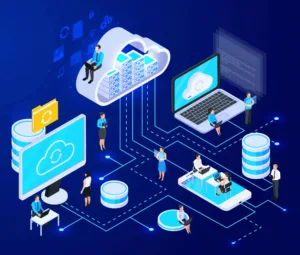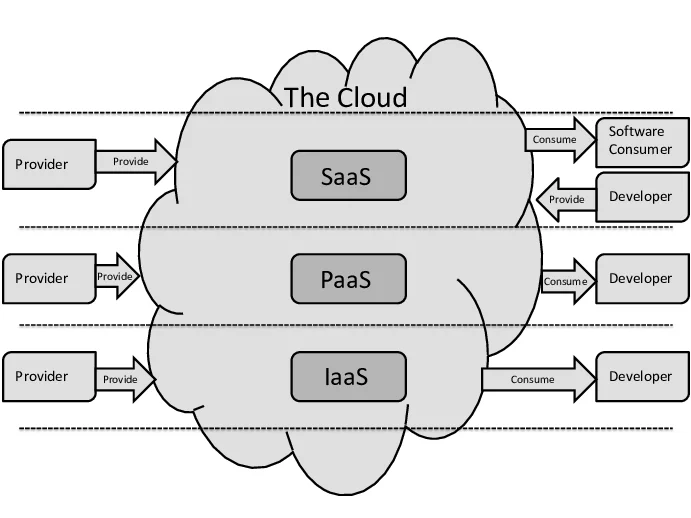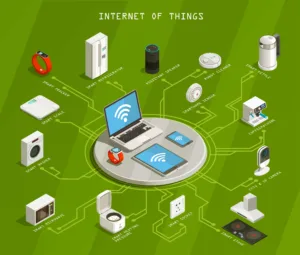
The present era in which we are residing is the era of technology. Each day the world is progressing at a rapid rate and technology has become the driving force behind the evolution of human race. Cloud computing is a real game-changer, not just for the humans, but also for the whole world of technology. It is like a super tool that is capable of managing our data in the smartest way possible. It has become the cart of the digital world that both businesses and regular folks use to make everything simpler and smoother. Let’s dive into the world of signals that carries data at rapid speed and learn about cloud computing- its working, significance, challenges and future aspects.
Understanding Cloud Computing
Cloud computing is responsible for delivering the computing services which include storage of data, processing power, networking and many more over the internet. Instead of relying on local servers or physical infrastructure, users can access these resources remotely enabling flexible and scalable solutions for various computing needs.

Areas of Cloud Computing
Ever since its evolution cloud computing has captured key areas to make things easier and more efficient. Few of the areas where cloud computing is widely used are as follows:
Data Storage and Backup
Cloud storage services allow individuals and businesses to store their data, files and documents securely on remote servers. Moreover, it saves our pocket by avoiding the need for physical storage devices by providing easy access to data from anywhere with an internet connection.
Software as a Service (SaaS)
SaaS brings software apps to you through the internet and you pay to use them regularly, like a subscription. It enables the users to access all these applications through a web browser thereby it eliminates installation and maintenance of these applications. Some of the examples are Google Workspace, Microsoft 365 and Salesforce.

Infrastructure as a Service (IaaS)
Cloud providers offer virtualized computing resources like virtual machines, storage and networking. This allows businesses to scale up or down their IT infrastructure based on their needs without investing in physical hardware.
Platform as a Service (PaaS)
PaaS offers a platform and environment for developers to build, deploy, and manage applications without dealing with the underlying infrastructure complexities. It has made the development process simple and has reduced the time and effort required.
Data Analytics and Processing
Cloud computing offers powerful tools for analyzing and processing large datasets. Companies can use cloud services to do things like analyzing big amounts of data, teaching computers to learn and dealing with data right away as it comes in.
Content Delivery and Streaming
Cloud content delivery networks (CDNs) accelerate the delivery of web content, videos and other media to users around the world. Streaming services also rely on cloud infrastructure to deliver content efficiently.
Collaboration and Communication
Cloud-based collaboration tools facilitate teamwork and communication by allowing users to work on documents, spreadsheets and presentations simultaneously and in real-time, regardless of their location.
IoT (Internet of Things)
Cloud computing helps devices in the Internet of Things (IoT) work better by giving them a place to gather, keep and understand data from all the connected devices. This makes it possible to create clever apps and services.

Disaster Recovery and Business Continuity
Cloud-based backup and recovery services ensure that businesses can quickly recover their data and systems in case of data loss or system failures.
Gaming
Cloud gaming services use remote servers to process and stream video games to user’s devices, eliminating the need for high-end hardware on the user’s end.
These are just a few examples of the many ways cloud computing is applied to various aspects of technology and businesses, making processes more efficient, scalable and accessible.
Benefits of Cloud Computing
Cloud computing has made things easier and simple. Some of the benefits of cloud computing are:
- Scalability: Cloud resources can be easily scaled up or down based on demand, ensuring optimal performance without overprovisioning.
- Cost Efficiency: Cloud computing eliminates the need for large upfront investments in hardware and infrastructure. Users pay only for the resources they consume, shifting IT costs from capital expenses to operational expenses.
- Accessibility and Flexibility: Cloud services can be accessed from anywhere with an internet connection, fostering remote work and collaboration. This flexibility has really come as a blessing for businesses with distributed teams.
- Reliability and Redundancy: Leading cloud providers offer high levels of redundancy and uptime through data replication across multiple data centers. This cuts down the chances of losing data and downtime.
- Innovation Acceleration: Cloud computing enables rapid application development and deployment, facilitating innovation cycles and faster time-to-market for products and services.
Challenges and Considerations
- Security and Privacy: Storing sensitive data on third-party servers raises concerns about data security and compliance with regulations. It is important for the users to understand their responsibilities and secure their data, even though the cloud providers invest a huge sum of money to deploy encryption and security measures.
- Vendor Lock-In: Moving applications and data between different cloud providers can be complex due to proprietary technologies and APIs. Choosing the right provider and designing applications for portability is essential.
- Performance Variability: Since cloud resources are shared among multiple users, performance can vary based on the workload of neighboring users. Careful resource planning and optimization are necessary to mitigate this challenge.
- Downtime and Availability: While cloud providers strive for high availability, downtime can still occur. Users should design architectures with redundancy and failover mechanisms to minimize disruptions.
Future Trends in Cloud Computing
- Edge Computing: With the rise of Internet of Things devices and real-time applications the edge computing brings processing closer to the data source, reducing latency and enhancing performance.
- Multi-Cloud Strategies: To avoid vendor lock-in and optimize cost and performance. Businesses are adopting multi-cloud approaches, utilizing services from multiple providers.
- Server less Computing: Server less architectures abstract server management allowing developers to focus solely on code. This enhances efficiency and scalability as resources are allocated dynamically.
- Artificial Intelligence and Machine Learning: Cloud platforms are increasingly integrating AI and ML capabilities. They enable businesses to leverage advanced analytics without significant upfront investments.
Computer experts who are really devoted a good time in computing have said that cloud computing has totally changed how computers and stuff work. It has made things much more flexible, scalable and easy to use for both businesses and regular people. Even though there are some problems like keeping things safe and being stuck with one company’s services, the good stuff is way more important. As technology keeps getting better, cloud computing will stay super important in making new things. Moreover, it will be important in deciding how the digital world will be. If businesses use the cloud well, they can do really well in the always-changing tech world.

👍👍
Good information